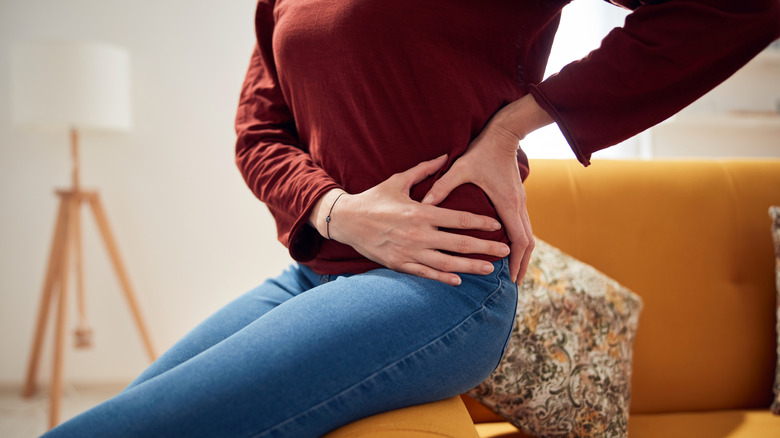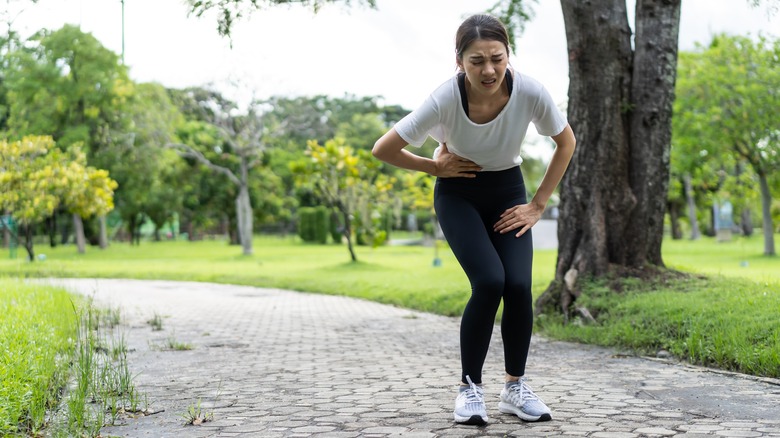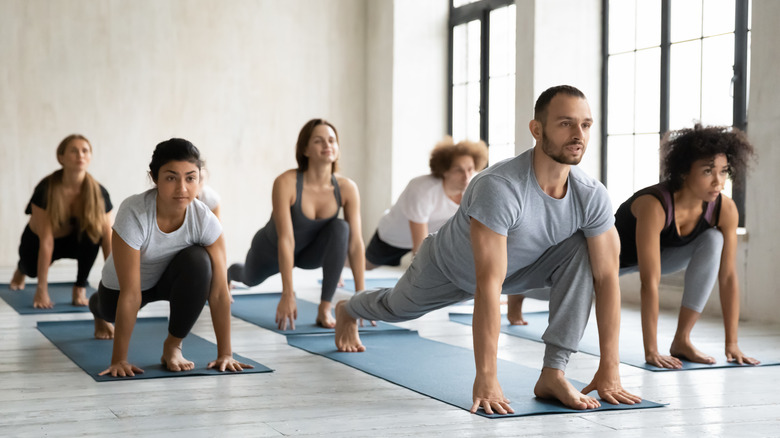Signs Your Hip Flexors Are Too Tight
We all know exercise is good for you, but overdoing it can lead to injury. On the other hand, being too sedentary can also create serious health problems. Hip flexors are among the parts of the body that can be significantly affected by both of these scenarios. The flexors are the muscles near the front of the hip that help you lift your knees up to your chest while you're standing up or lying on your back, as MedlinePlus explains.
According to the International Sports Science Association (ISSA), hip flexors can become tight after an extended period without movement, such as an office job where you're seated for most of the day. Tightness in these muscles can also occur after a great deal of running since they're repeatedly activated with every stride without being "compensated for by a lengthening movement."
Likewise, you could also experience tight hip flexors if your core muscles are weak. But how tight is too tight? Luckily, there are a few ways to tell, along with several methods to alleviate the tightness.
Tight hip flexors increase your chance of injury
Even if you don't exercise regularly, having tight hip flexors can still cause major issues. It can restrict other muscles in the body that you use while just walking around your home, such as the glutes. This may lead to pain in the lower back, knees, and hips or poor posture, which can increase your risk of injury, as Aletha, Inc. cautions. That's why it's important to know the signs that point to tension in these muscles so you can loosen them up.
Better Health Alaska lists a few symptoms of tight hip flexors, which include pain or tightness in the neck, glutes, upper groin area, or lower back when you're standing up. Likewise, if you're struggling to retain good posture, it's usually a bad sign. Aletha, Inc. adds that if your hip flexors feel tender to the touch, or you're hearing a popping sound in the general area when you move your leg, these are additional signs of tightness in these muscles.
Further, sharp pain in the groin area, cramping in the upper leg muscles, bruising or spasms in the hips, limping, and limited mobility in the legs are other symptoms to look out for, according to ISSA. Although the list of warning signs is a long one, there are several things you can do to loosen your hip flexors.
There are several ways to loosen tight hip flexors
One solution for loosening up tight hip flexors is to perform some stretches, which are all easy to complete at home. As Better Health Alaska details, to perform the butterfly stretch, for instance, simply sit on the floor, then pull your feet as close to your body as possible until your heels and toes are touching. Continue holding your feet together as you open your legs, trying to make contact with the ground with each knee. Use your hands to push the knees down if you prefer. After you've opened your legs as far as you can, hold the stretch for at least 30 seconds.
ISSA claims a low lunge can also help alleviate hip flexor tightness. Start by stepping forward, just as you would with a regular front lunge. Then, get down low and place your palms in front of you. Stretch the back leg back as far as you can while resting on your toes. The knee in front of you should be close to your armpit. Then switch legs.
Another great option is the seated figure four stretch. While sitting comfortably on a chair, lift one leg up and place your ankle on the other. Hold it in place as you slowly lean forward as far as possible. Hold the stretch for 30 seconds, then switch legs and repeat. This stretch can also be done while seated on the ground or lying on your back.


